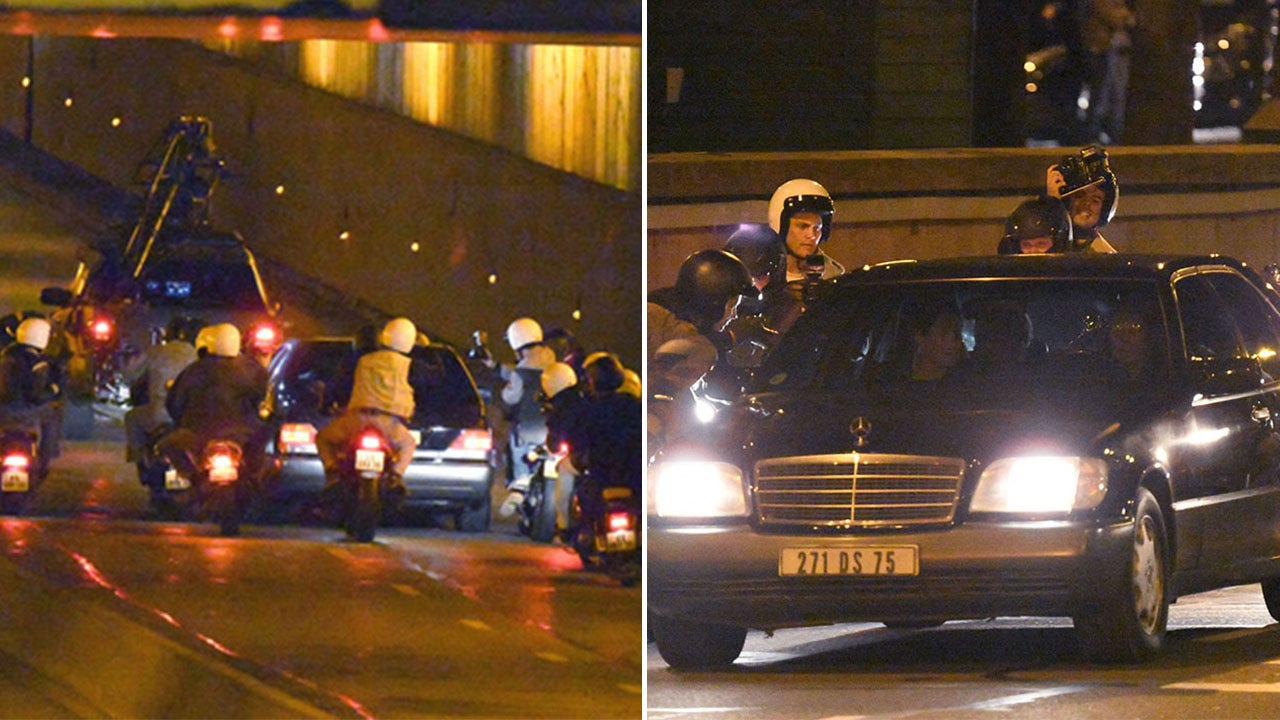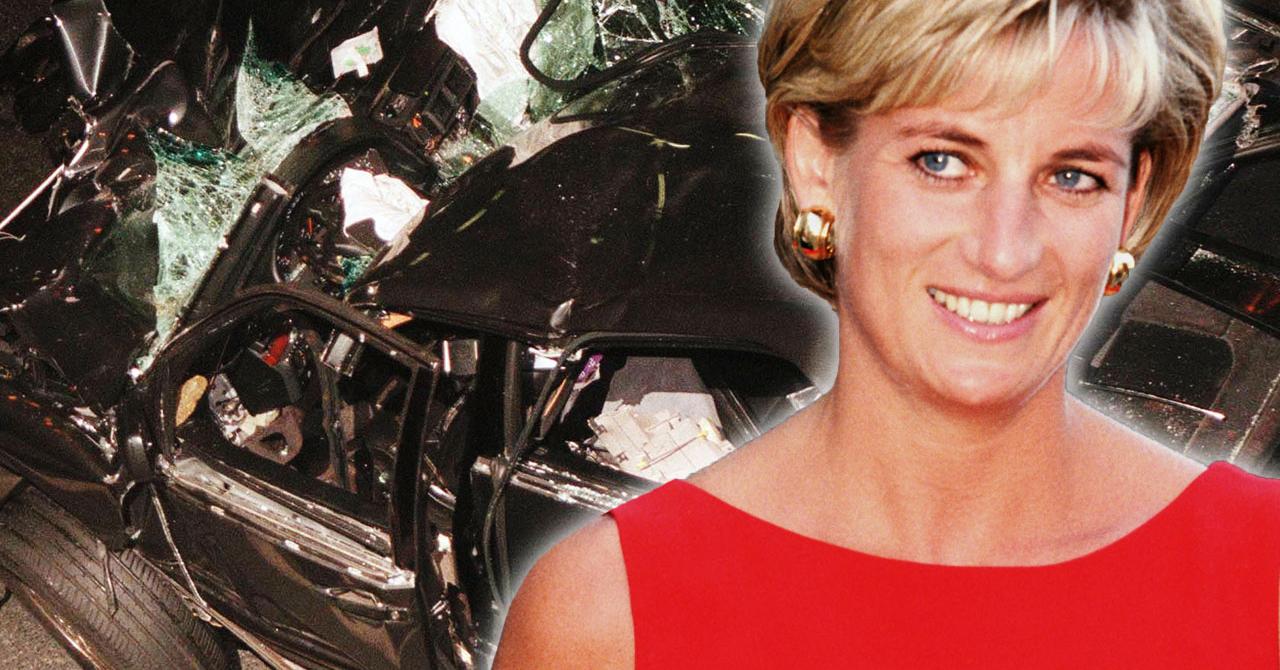It’s one of the most tragic moments in modern history, and yet, the story behind the photos of Princess Diana's car crash remains shrouded in mystery and controversy. From conspiracy theories to raw human emotion, this incident has left a lasting impact on the world. So, what exactly happened that fateful night? Let’s uncover the truth together.
Let me set the scene for you: It’s August 31, 1997, and Princess Diana, the People’s Princess, is racing through the streets of Paris in a black Mercedes. The car speeds down the Alma Tunnel, but something goes terribly wrong. The car crashes, and the world watches in horror as the events unfold. The photos that emerged afterward only added fuel to the fire, sparking debates and questions that still linger today.
Now, you might be wondering why we’re diving deep into this topic. Well, it’s simple: The truth matters. And in a world filled with misinformation and half-truths, it’s crucial to separate fact from fiction. So grab a coffee, sit back, and let’s unravel the story behind those haunting images.
Read also:Hd4hub 2024 Your Ultimate Guide To The Latest Innovations In Highdefinition Content
Biography of Princess Diana
Before we dive into the car crash and its aftermath, let’s take a moment to understand who Princess Diana really was. She wasn’t just a royal figure; she was a global icon, a humanitarian, and a symbol of hope for millions around the world.
Early Life and Rise to Fame
Diana Frances Spencer was born on July 1, 1961, in Sandringham, Norfolk, England. She came from a family with deep ties to the British monarchy, but her early life was far from glamorous. Diana grew up in a loving but tumultuous household, with her parents divorcing when she was just nine years old. Despite the challenges, she developed a strong sense of empathy and compassion, qualities that would define her later years.
Her Role in the Royal Family
In 1981, Diana married Prince Charles, heir to the British throne, in a fairytale wedding watched by millions worldwide. As Princess of Wales, she became a global sensation, capturing hearts with her elegance, warmth, and dedication to charity work. However, the marriage faced numerous challenges, including public scrutiny, infidelity, and eventual separation.
Humanitarian Work
What truly set Diana apart was her commitment to helping others. She championed causes like AIDS awareness, landmine clearance, and children’s welfare, using her platform to bring attention to issues often overlooked by the elite. Her work earned her the nickname “The People’s Princess,” a title she wore with pride.
| Full Name | Diana Frances Spencer |
|---|---|
| Date of Birth | July 1, 1961 |
| Date of Death | August 31, 1997 |
| Spouse | Prince Charles (1981–1996) |
| Children | Prince William and Prince Harry |
The Fateful Night: What Happened?
So, let’s get into the nitty-gritty of that tragic night. On August 31, 1997, Princess Diana, her boyfriend Dodi Fayed, and their driver Henri Paul were traveling through the Alma Tunnel in Paris. They were being pursued by paparazzi, and the driver, reportedly under the influence of alcohol, lost control of the vehicle. The car slammed into a pillar at high speed, resulting in a catastrophic crash.
Who Was There?
At the time of the crash, there were four people in the car: Princess Diana, Dodi Fayed, Henri Paul, and bodyguard Trevor Rees-Jones. Tragically, both Henri Paul and Dodi Fayed were killed instantly. Diana and Rees-Jones survived the initial impact but were critically injured.
Read also:5starsstockscom Staples Your Ultimate Guide To Investing In Bluechip Stocks
The Role of the Paparazzi
One of the most debated aspects of the crash is the role played by the paparazzi. Reports suggest that the relentless pursuit by photographers contributed to the high-speed chase that led to the accident. To this day, many believe that the media’s obsession with Diana’s private life played a significant part in her untimely death.
The Controversial Photos
Now, let’s talk about the elephant in the room: the photos. In the immediate aftermath of the crash, photographers captured harrowing images of the scene, including close-ups of Diana lying unconscious in the car. These photos sparked outrage and condemnation from around the world.
Why Were the Photos Taken?
Some argue that the photographers were simply doing their job, capturing what they believed to be newsworthy images. Others claim that it was an act of voyeurism, exploiting a tragedy for personal gain. Whatever the reason, the photos remain a dark stain on the history of photojournalism.
Who Released the Photos?
The photos were initially obtained by French tabloids, but they were later suppressed following public backlash. However, a few images did leak to the press, fueling the already intense media frenzy surrounding Diana’s death. To this day, the full set of photos has never been publicly released, adding to the mystery surrounding the incident.
Conspiracy Theories: Fact or Fiction?
No major tragedy escapes the realm of conspiracy theories, and Diana’s death is no exception. Over the years, numerous theories have emerged, ranging from plausible to downright bizarre. Let’s break down some of the most popular ones.
The Royal Family Plot
One of the most infamous theories suggests that the Royal Family orchestrated the crash to eliminate Diana, who they allegedly saw as a threat to the monarchy. Proponents of this theory point to the strained relationship between Diana and the royals, as well as the suspicious circumstances surrounding the crash.
The Role of Dodi Fayed’s Family
Another theory implicates Dodi Fayed’s family, particularly his father Mohamed Al-Fayed, in the tragedy. Some believe that Al-Fayed had a hand in the crash to frame the British establishment. While this theory lacks concrete evidence, it has persisted in certain circles.
Driver Error and Alcohol
A more grounded theory suggests that the crash was simply the result of human error. Investigations revealed that Henri Paul, the driver, had consumed alcohol prior to the incident, leading to impaired judgment and reckless driving. While this explanation may seem straightforward, it doesn’t satisfy everyone.
Legal and Ethical Implications
The crash and its aftermath raised numerous legal and ethical questions that continue to be debated today. From the actions of the paparazzi to the role of the French authorities, the incident highlighted the need for stricter regulations in the media industry.
The Role of the French Courts
In the years following the crash, several investigations were conducted to determine the cause of the accident. The French courts eventually ruled that Henri Paul’s intoxication and excessive speed were the primary factors. However, many remain skeptical of the official findings.
Media Ethics and Responsibility
The incident also sparked a global conversation about media ethics and the responsibilities of journalists. Many argued that the relentless pursuit of celebrity news had crossed a line, leading to tragic consequences. As a result, some countries implemented stricter guidelines for paparazzi and photojournalists.
The Legacy of Princess Diana
Despite her untimely death, Princess Diana’s legacy continues to inspire millions worldwide. Her dedication to charity work, her compassion for others, and her ability to connect with people from all walks of life have left an indelible mark on history.
Charitable Work and Advocacy
From fighting the stigma of AIDS to advocating for landmine clearance, Diana’s humanitarian efforts have had a lasting impact. Her work continues through organizations like the Diana Award and the Elton John AIDS Foundation, which honor her memory by carrying on her mission.
Impact on the Royal Family
Diana’s death also had a profound effect on the British Royal Family. It forced them to reevaluate their relationship with the public and adapt to the changing times. Her sons, Prince William and Prince Harry, have carried on her legacy by championing causes close to her heart.
Lessons Learned: Moving Forward
As we reflect on the events surrounding Princess Diana’s car crash, it’s important to consider what lessons we’ve learned. How can we ensure that such tragedies are never repeated? What steps can we take to hold the media accountable for their actions?
Media Accountability
One of the key takeaways from Diana’s death is the need for greater accountability in the media industry. Journalists and photographers must be held to higher ethical standards, ensuring that they prioritize human dignity over sensationalism.
Public Awareness
Finally, it’s up to all of us to remain vigilant and critical consumers of media. By demanding better standards and supporting ethical journalism, we can help prevent similar tragedies in the future.
Conclusion: The Truth Matters
As we’ve explored the truth behind the photos of Princess Diana’s car crash, it’s clear that this tragedy continues to resonate with people around the world. While the full story may never be fully uncovered, one thing is certain: Diana’s legacy lives on, inspiring generations to come.
So, what can you do? Share this article with your friends and family, start a conversation about media ethics, or donate to a charity in Diana’s name. Together, we can honor her memory and ensure that her message of compassion and kindness continues to shine brightly.
Table of Contents


